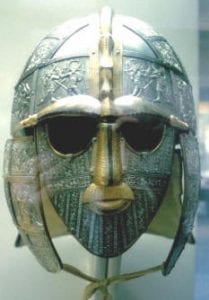The work of a historian is a bit like that of a detective. A historian examines different types of evidence and then tries to piece together the facts.
A piece of evidence or artefact is called a historical source. There are primary and secondary sources, each with different characteristics.
Primary Sources
A primary source is something that was produced in the past and has survived to the present day. Primary sources are considered more useful because they offer first-hand evidence. These sources are not analytical and need to be considered in the context in which they were produced. It is therefore necessary to have a fairly good understanding of the period from which the source originated.
Some examples of primary sources are:

Buildings
Official documents
Diaries
Manuscripts
Music
Poetry
Paintings
Armour
Weapons
Coins
Advertisements
Newspaper reports
Secondary Sources
A secondary source is something that has been made more recently but is about the past. It is generally the result of a studied analysis of other primary and secondary sources. When considering the usefulness of these sources it is a good idea to research the person who has created the source. Secondary sources that have been produced more recently are the most valuable because they use the latest evidence.
Some examples of secondary sources are:

Dissertations
Essays
History books
Textbooks
Scholarly articles
Encyclopaedias
Reference websites
Magazine articles
Documentaries
Reviews
Faux items
Primary and Secondary Sources
 This is an Anglo Saxon helmet on display in the British Museum. The helmet has survived from the 7th century and is therefore a primary source.
This is an Anglo Saxon helmet on display in the British Museum. The helmet has survived from the 7th century and is therefore a primary source.
You could go to the museum and make an accurate drawing or sketch of the helmet. That drawing would then be a secondary source since it has been made recently and depicts something from the past.
This photograph is also a secondary source since it has also been made more recently and depicts something that has survived from the Anglo Saxon period.
Citation Information:
Heather Y Wheeler. (2020 – 2022). Primary and Secondary Sources. Available: https://www.historykeyskills.com/primary-and-secondary-sources/. Last accessed July 7th, 2025
